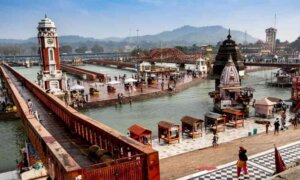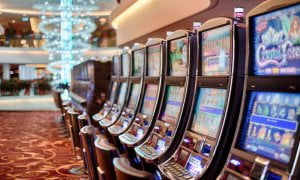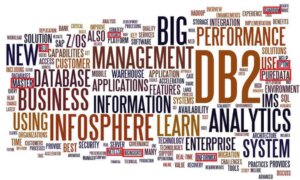Tourism Planning: The written account of projected future course of action or scheme aimed at achieving or targeting specific goals or objectives within a specific time period is called a Plan. A Tourism plan explains in detail what needs to be done, when to be done, how to be done, and by whom to be done. It often includes best case, expected case, and worst case scenarios or situations.
A plan is usually a map or list of steps with timing and available resources, used to achieve an objective to do something. It is commonly understood as a temporary set of projected actions through which one believes that the goals or targets would be achieved.
Plans can be formal or informal:
Structured and formal plans, utilised by numerous people, are more likely to occur in projects, diplomacy, careers, economic development, military campaigns, combat, sports, games, agriculture, technology, tourism, IT, Telecommunication etc. or in the conduct of other businesses.
In most cases, the absence of a well-laid plan can have high effects: for example, a nonrobust project plan can cost the organization long time and high cost.
The persons to fulfill their various quests do informal or adhoc planning. But, what most importantly matters is the extensiveness, time interval, and preciousness of the plans. Though, all these planning categories are not self-governing and dependent on each other.
For example, there is an intimate connection between short-range and long-range plans and tactical (strategic) & functional (operational) planning classifications.
For businesses, sector planning’s (such as IT, telecommunication, services, banking, tourism, agriculture etc.) and military purposes formal plans used to a greater level. They are conceptualized, thought as abstract ideas, are likely to be written down, drawn up or otherwise stored in a form that is accessible to multiple people across time and space. This allows more reliable collaboration in the execution of the plan.
Tourism Planning and the Need for Tourism Planning
Planning is one of the most important project management and time management techniques or methods. It involves preparing or forming of a sequence of action steps to achieve some specific desired goals. If you do it effectively and efficiently, you can reduce much of the necessary time and effort used in achieving the goal.
A plan is like a map or a blueprint which would fetch you results slowly & steady according to a time frame. Whenever, you are following any plan, you are able to know how much you have neared to your assignment objectives or how much distant you are from your goals.
Why is planning important?
- To set direction and priorities for the workforce in the organisation:
The strategy is the chief requirement of the organization, in order to achieve the targets. The strategies give the route and primacies (priorities) for your organization. It describes your organization’s perspective and gives an order to the activities that will make the perspective into reality.
Read more on World Federation of Tourist Guide Associations (WFTGA)
The plan will assist the team in achieving goals and also give them familiarity about the tasks. The plainly defined and appropriate strategy will give priority initiatives that will drive the maximum success.
- To get everyone on the same room or the same box:
An organisation has different departments, but a single goal. That’s, why different departments work in a way that add to the goals of the organization.
Hence, a strategy is required, so that all actions move in one direction. Then only, the various departments such as marketing, administration, sales, operations etc. can move together to accomplish the anticipated goals of the organisation. Tourism Planning
- To simplify decision-making process within the organisation:
Whenever, there are targets, there are different solutions. The team also may have new philosophies or probable solutions. Therefore, you need a definite plan, so there are no inhibiting factors.
- To drive alignment:
Many a times, inspite of the best labour, you reach nowhere. The reason is that the efforts or labour is done in areas, which are of no use. Hence, the effort should coincide with the priorities or primacies. The plan serves as a vehicle for answering the enquiry, that “How well we can use all the resources such as material, man, machine etc. to upsurge our tactical (strategic) success?
- To communicate the message to everyone:
The countless managers in the top level management know how to make an effective plan/strategy, at which position their organisation is, what they need to do and where they need to be there Many a time, the strategies are not written down and the various aspects in the plan are not linked systematically.
Then, only few members of your team can work towards your goals. Therefore, it’s very important that your team, staff, customers, suppliers and other stakeholder’s know your plan of action and strategy base, this will lead to better probability of success and more efforts pouring in. Tourism Planning
Also read Contribution of Tour Guiding in Sustainability
Once, you ascertain your goal, you are in a good position to make a solid proof plan in which role of each team member is defined. There are very less managers, who have understanding of situations and actually comprehend to make the greatest use of their part in smoothing policy (Eagles, McCool, Haynes, Philips, & United Nations Environment Programme, 2002).
Techniques of Plan formulation
It involves a number of steps:
- Collection of information (data):
The most noteworthy phase of economic planning is the gathering of the economic data. The data not only contains economic defining variables, but also descriptive variables such as demographical, topographical, and political data. The economic planning also contains non-quantitative variables. And surely in order to collect appropriate data the planner should have intra-disciplinary as well as inter-disciplinary knowledge.
- Deciding the nature and duration of the plan:
After the collection of data in context to the economy. Now the next step is deciding the nature and period (time duration) of the plan. Now, the planner has to decide the planning levels i.e. micro or macro basis, functional (practical) or structural (operational),centralised (central) or decentralised (distributed), long or medium or short term etc. The medium term plan generally comprises 5 years and is enough time periods to apply its drivers, strategies and approaches.
Also read Goals and objective of sustainable tourism development
- Setting up of the objectives:
The third step after setting the nature and time period of the plan is setting the goals or objectives or aim of the plan. And, surely these objectives will have to be realized in a fixed time schedule. Generally, most of the objectives related to economy of the country are related to advanced progress rate of GNP, reduction in joblessness, eradication of local discrepancies, removal of illiteracy, growth of farming and manufacturing areas, etc.
After, the planner has analysed the ground situation and given the objectives. Now, the planner has to establish these objectives depending on the eminence/Significance to the individuals and the economy in totality.
- Determination of growth rate:
While framing the plan, the planner has to determine the growth rate i.e. at what rate the economy will grow through this time interval. Whatever plan, the planner and policy makers decide at least, it should maintain the per capita income level of the country. The plan should be such that the per capita income do not decreases or affect the progress of the country negatively.
And, such a thing is possible, if the growth rate of GNP or growth rate of the country and growth rate or progress of the population is same. But this growth rate is least recommended. Rather, the planner will choose for that growth rate which is better than the population rate. “For example, if India wants to maintain its present per capita income while population is growing at the rate of 8% p.a., then the obligatory GNP growth rate should not be less than 8%. If we want to grow GNP by 8%, NI should grow @ 16%.
If the capital output ratio (COR) is 1:3, then we will have to invest 16% of GNP. While defining the growth rate, the planner must keep in view the growth rate of other adjoining or developing countries like Pakistan, China, Sri Lanka, Indonesia, Bangladesh, etc.” Tourism Planning
- Full utilisation of financial resources of the plan:
The utilization of resources including the fiscal resources should be in a way that the predetermined objectives are realized. The various resources used in a plan of a country are human resources, natural resources, technology, worthy governance, entrepreneurial skills, financial resources etc. Therefore, from these resources or sources advantages or profits can be achieved.
Read more Local Community Involvement in Tourism Development
Broadly it can be categorized into renewable or renewal resources. Advantages of resource application may be augmented prosperity or needs, appropriate operation of a system, or boosted welfare. With the resource allocation, resource management is also crucial in a plan. The various resources have three basic attributes- “utility, limited availability, and potential for depletion or consumption.”
In order to accomplish the planning requirements, outside (external) resources are also used, when internal (inside) resources fall short. The outside resources generally comprises of foreign relief and support, foreign grants, foreign direct investment, and foreign borrowings from various International Financial Institutions (IFI’s) and rich countries.
The role of government is important and cannot be ignored. They plan and take various roles depending upon the environment of the country. When, a country is developed, their role more becomes as a facilitator, while in case of developing or poor countries, they have to actively participate in it. They have to implement plans as well as pour on their resources.
Whenever, the plans have been made by the government, they are sent to the necessary departments with goals, necessary steps and outlays. Thereafter, the concerned ministries or departments see the feasibility of the sent projects and give recommendations about the feasibility (viability) of various schemes and projects of the plan. Here, the government organisations are asked of their keeping in mind the sectorial distribution and extent of the plan. There are also some projects where partnership occurs between governmental and private sectors. Here, the government may play role of a catalyst or facilitator and there may be some revenue sharing understandings.
- Formation of economic policies:
In planning, plans are fine. The role of planners is fine. But, most importantly the plans should be able to give the desired results. The results should have more positive effects than the negative effects. Here, economic programmes, policies or strategies play a substantial role. As, they act as a gasoline to the locomotive of economic development. Also, the plans implemented should be based on ground or current scenario, rather than being picked from other countries, environments or sectors.
- Plan execution:
The final phase of planning is plan operation. And, for actual implementation of plan, following conditions cannot be ignored:
- The regime should be steady, truthful, genuine and productive.
- The organisational (administrative) system should be well-organized,
- i.e. free of nepotism, dishonesty, enticement, red tapism.
- Upkeep of law and order inside the nation.
- There should be equivalent level of involvement of both private and public sectors in economic growth.
- Keep a check on convenience and electronic up keep of government records, monetary proclamations and cost statements. Tourism Planning
- The opposition should be Watchful and productive. (Wagner, Frick, & Schupp, 2007)
- Different countries use planning models/techniques dependent upon the nature of the economy.
- The availability of the data, the volume to use and manage such techniques and models.
Read more Tourism Policy formulation Bodies in India




